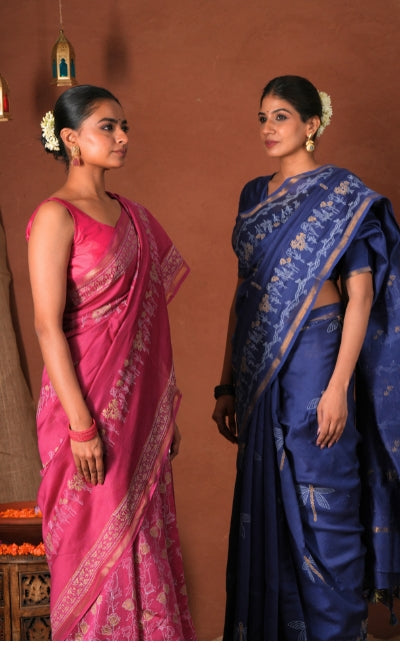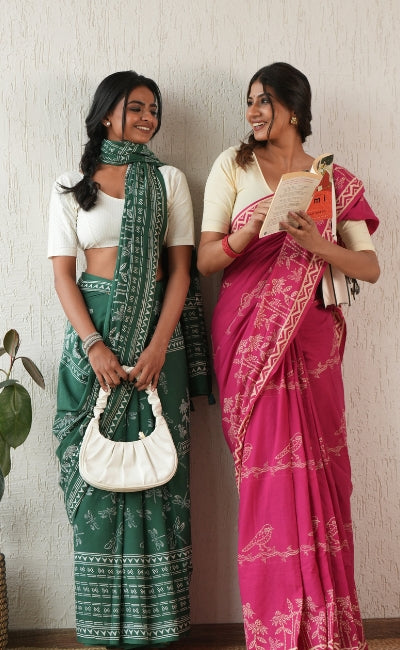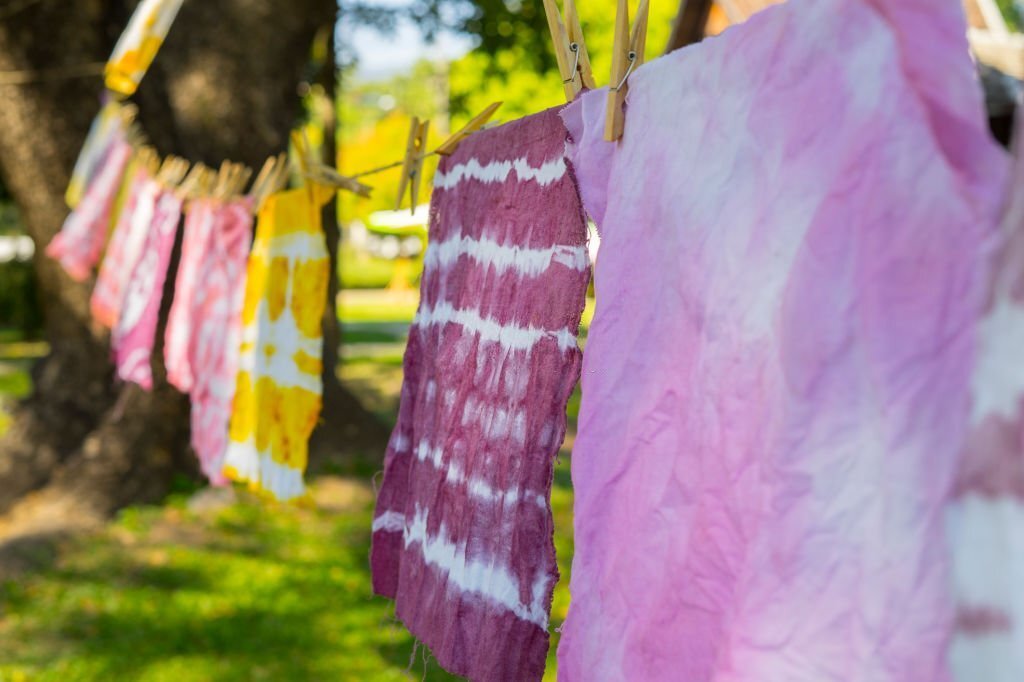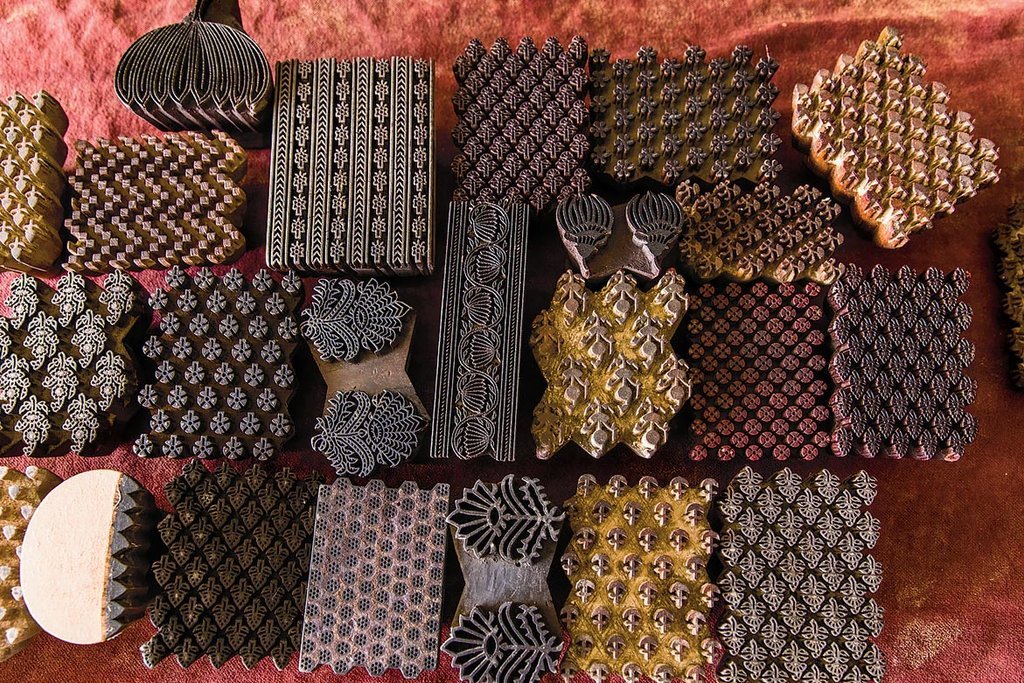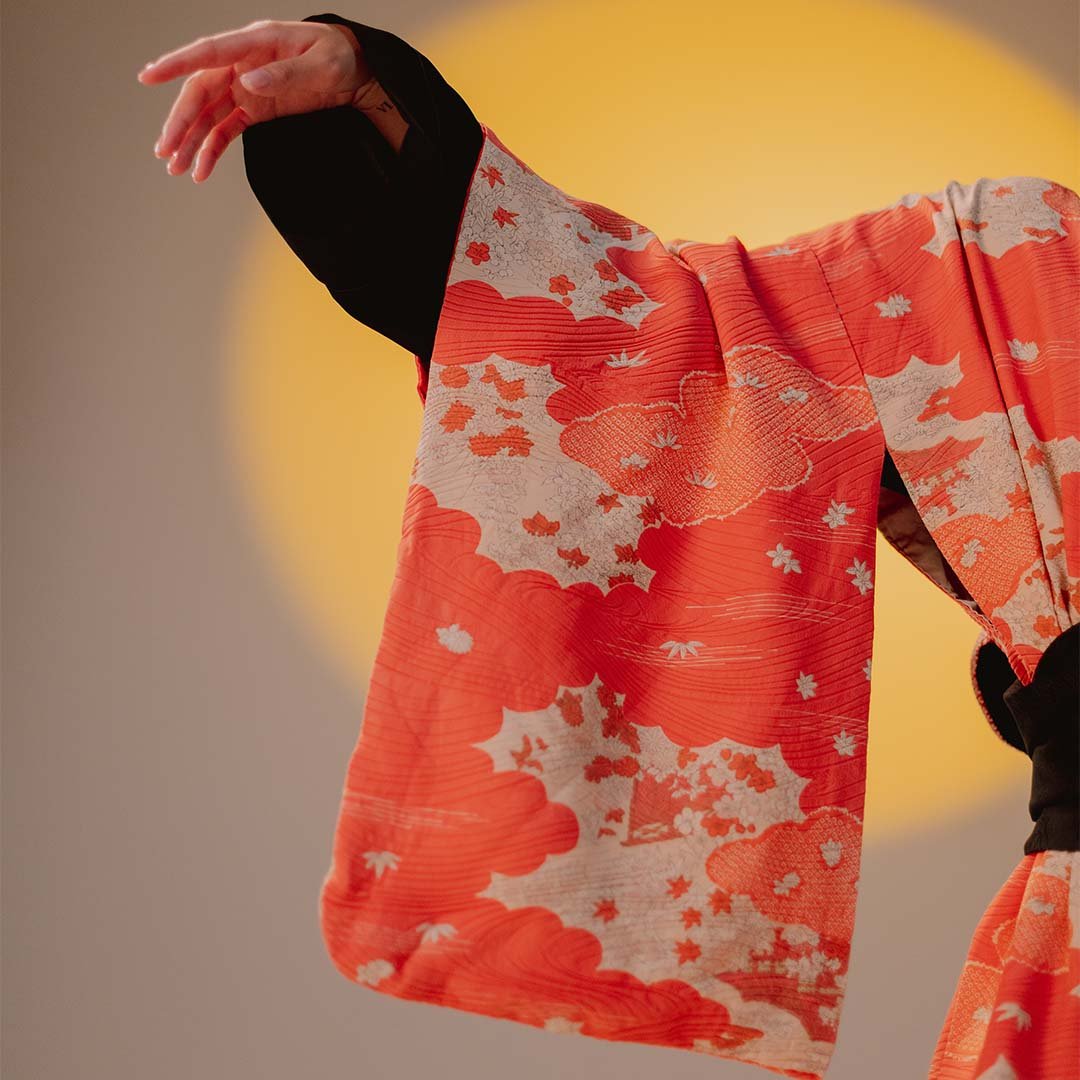
BAGRU - AUTHENTIC AND NATURAL ARTFORM OF JAIPUR
Jaipur's flamboyant ways, from its busy bazaars, royal palaces, and forts to its colorful streets, scenic countryside, and dynamic artisan communities, are the beating heart of the city. The region has a distinct design language represented in its architecture, crafts, and textiles as a creative and artistic hotspot. Archaeologists discovered fabric remnants with the trademark Jaipur patterns in the Roman trading town of Palmyra in Syria, which dates from the third century. This sheds light on how the block printing technique is inextricably linked to Rajasthan and how it has thrived under royal patronage for generations.
Generations of artisans have passed down the knowledge and ability required to make beautiful block prints. Working with natural dyes and mordants and resisting printing, dyeing, and carving beautifully patterned wooden blocks were all part of this. An extensive and unique pattern vocabulary is produced with many influences from the West, south-east Asian dynasties, and indigenous culture. The Bagru is one of Jaipur's most cherished and time-honored block printing techniques, which we shall learn more about this blog.
Bagru, a small village in Rajasthan, 35 kilometers from Jaipur, is known for its hand block printing utilizing traditional processes and natural colors. Block printing is still practiced by the Chippa community, who have lived here for over 400 years. Bagru prints have acquired appeal in the local market and outside India due to increased awareness and the quality of this craft.
In our first blog, Block Printing, History And Importance, we went into great detail about Block printing and its technique. In our second blog, Importance of Rajasthani Block Printing, we went into great detail about the oldest fabric printing method that still has roots in India, China, and Japan.
One such process is the Bagru block printing technique, which is unique to the state of Rajasthan and employs natural colors in its creation.
Indians were among the world's first to master the art of dyeing and printing with fast (natural) colors. Hand block printing is a historical craft passed down through generations in many parts of the country. Each group has its style, processes, and natural materials and patterns that set them apart. The 'Bagru' print is an example of a centuries-old traditional hand block printing technique still practiced today.
Rajasthan is one of the Indian states that has preserved block printing art. In the state's innards, a strange small settlement called Bagru is only known for maintaining alive the three-century-old printing heritage. "Bagru print" is the unique and beautiful efforts of the artisans who employ these hardwood blocks in their own unique style and use indigenous printing procedures.
HISTORY OF BAGRU PRINT
Though we do not have any legitimate records to prove how old this technique is, it is estimated to be around 450 years old, as evidenced by numerous readings and excerpts. This art was first introduced by the Chippa community, who moved from Sawai Madhopur (Alwar) and settled in Bagru. People began to identify this place with their names, and it is today known as Chhippa Mohalla (Printer's Quarters), which is located along the Sanjaria River. Chippa means stamper or printer. So, like any other nomads, these folks settled beside the river and made a living for themselves. They got their primary material for their painting from the abundant clay beside the riverbank. The artists smear the linen with Fuller's earth from the riverbank and then dip it in turmeric water to create the beige backdrop. After that, they stamp the material with gorgeous motifs using natural dyes in earthy colors, as instructed in the previous procedures.
So, there was one way of looking at the story. If you speak to different people, they will tell you other stories about how these Bagru prints came to be. They think the Thakur of this town wanted to establish this village as a center for Bagru print, so he brought two families of printers from Isarda, a town near Jaipur. Because this family was known as Chippas in the area, they set up shop (bagru print saree, dupatta, kurti, dresses) on the riverbank using sand as their main ingredient and creating intricate designs that made this art famous in Rajasthan.
In terms of stories, we'd be okay with either because it has earned worldwide state acclaim, to the point that the Chhipa mohalla in Bagru is known as the center of hand block printing, with various colors of fabric hung on terraces.
PROCESS OF BAGRU PRINT
It is a time-consuming technique that necessitates a great deal of expertise, patience, and tolerance on the artist's part. The pattern is printed on teak-wood blocks that have been soaked in oil overnight and then washed before being put to use. These block collections are regarded as the genuine wealth of Chhipas that they have accumulated over time. After that, the fabric is soaked in Fuller's earth and then dipped in turmeric water to achieve a yellow tone. To soften the fabric, it is soaked in a solution of clay and other chemicals and then dried before being utilized for printing. To get appealing prints, neat stamping is essential.
The dyed fabric is then stamped with blocks, which are gorgeous designs. The fabric's base color is commonly bland colors like white, cream, beige, and natural colors. After printing for the last touch-up, the material is let dry in the sun. Aath Kaliya, Chopard, and Kamal are some of the themes utilized in Bagru print.
Take a look at any authentic hand-block-printed cloth on a tour of the Royal city, as Jaipur is known for its art, and you will grasp the minuteness of the labor involved. The human touch is visible due to subtle flaws that machines would otherwise overlook. However, one can presumably appreciate the artisans' efforts in each stage of crafting a hand-block printed fabric. As a result, hand block printing is an environmentally beneficial art form that deserves to be appreciated and recognized, as it exhibits nature's beauty at its best. If you happen to be in Jaipur, you can go shopping for these genuine works of art.
ALL IN ALL
Each of these block prints is unique and different in its way and has a special place in our history and emotions. Our responsibility as torchbearers of India's rich cultural heritage is to honor, protect, and promote these crafts. We take great care at SootiSyahi to guarantee that these exquisite prints are loved as they should be. Find our block-printed weaves at www.sootisyahi.com, our eCommerce store.


